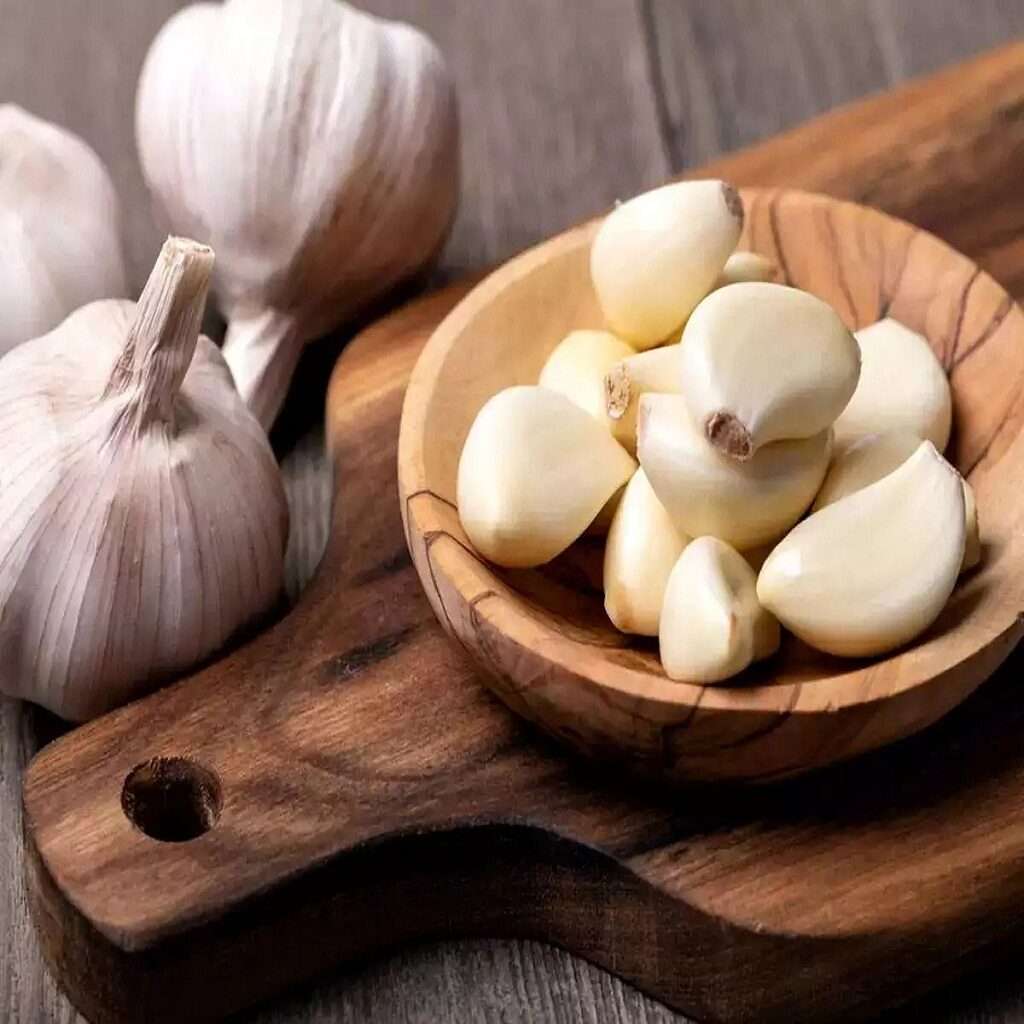Welcome to your holistic living

Botanical Name: Allium sativum Linn
Family: Amaryllidaceae
English Name: Garlic
Malayalam Name: Veluthulli
Hindi Name: Lahsun
Garlic is a perennial herb, grown globally as a spice and medicine. It produces underground bulbs composed of cloves enclosed in a white-papery sheath. The leaves are flat and linear. Garlic is known for its pungent odor due to sulfur-containing compounds like allicin. It is one of the most valued plants in Ayurveda for its rasayana (rejuvenative), hridya (cardiac), and vata-kapha pacifying properties.Garlic is a perennial flowering plant that is native to Central Asia, South Asia and northeastern Iran. It grows from a bulb, with a tall, erect flowering stem that reaches up to 1 m (3 ft). The leaf blade is flat, linear, solid, and approximately 1.25–2.5 cm (0.5–1.0 in) wide, with an acute apex. The plant may produce pink to purple flowers from July to September in the Northern Hemisphere. The bulb has a strong odor and is typically made up of 10 to 20 cloves. The cloves close to the center are symmetrical, and those surrounding the center can be asymmetrical. Each clove is enclosed in an inner sheathing leaf surrounded by layers of outer sheathing leaves. If garlic is planted at the proper time and depth, it can be grown as far north as Alaska. It produces hermaphroditic flowers. It is pollinated by butterflies, moths, and other insects.
Bulb (cloves) – most used, leaves (sometimes used fresh in cooking)
1. A painful uterine disorder (endometriosis). Taking garlic powder tablets by mouth daily for 3 months seems to improve pain in people with this condition.Hardening of the arteries (atherosclerosis). Taking garlic powder by mouth, alone or with other ingredients, seems to help slow hardening of the arteries. 2. Diabetes. Taking garlic powder by mouth seems to reduce pre-meal blood sugar levels by a small amount in people with or without diabetes. It seems to work best if it is taken for at least 3 months. It's unclear if garlic reduces post-meal blood sugar levels or HbA1c levels. 3. High levels of cholesterol or other fats (lipids) in the blood (hyperlipidemia). Taking garlic by mouth daily for at least 8 weeks might reduce total cholesterol and low-density lipoprotein (LDL, "bad" cholesterol) in people with high cholesterol levels. But any benefit is probably small. And taking garlic doesn't help increase high-density lipoprotein (HDL, "good" cholesterol) or lower levels of other blood fats called triglycerides. 4. High blood pressure. Taking garlic by mouth seems to reduce systolic blood pressure (the top number) by about 7-9 mmHg and diastolic blood pressure (the bottom number) by about 4-6 mmHg in people with high blood pressure. 5. Build up of fat in the liver in people who drink little or no alcohol (nonalcoholic fatty liver disease or NAFLD). Taking garlic powder by mouth seems to help to improve liver health in people with NAFLD. People who eat more garlic also seem to be less likely to be diagnosed with NAFLD. 6. A serious gum infection (periodontitis). Taking aged garlic extract by mouth twice daily for 18 months can help improve gum health in people who have mild or moderate periodontitis.
Antihypertensive,Hypolipidemic,Antiplatelet,Antimicrobial,Antiviral,Antifungal,AntioxidantAnti-inflammatory,Immunomodulatory,Anticancer,Cardioprotective,Neuroprotective
Rasa: Katu, Tikta, Kashaya
Guna: Laghu, Snigdha, Tikshna
Virya: Usna
Vipaka: Katu
Dosha Karma: Vatakapha shamaka